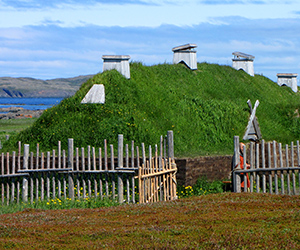CANADA HISTORY - War
Ceasefire

The Korean War, which had begun with the sudden and brutal invasion of South Korea by North Korean forces in June 1950, continued with unrelenting ferocity for three long years. By mid-1951, as the war settled into a bloody stalemate along the 38th parallel, the possibility of a diplomatic settlement began to emerge. Peace talks first opened in Kaesong in June 1951, but they quickly fell into disarray. The negotiations were plagued by distrust, intransigence on both sides, and the complexities of the Cold War that framed the conflict. The war, meanwhile, dragged on through the winter of 1951, as both sides dug in and fought a limited war of attrition. Trench warfare replaced the fluid advances and retreats of the early months, and the brutal fighting, though not always decisive, continued to claim lives and resources. The stalemate dragged on for another two years, with no end in sight.
The course of the war began to shift in late 1952 with the election of Dwight D. Eisenhower as President of the United States. Eisenhower, a former general who had commanded Allied forces in Europe during World War II, brought a different perspective to the conflict. He was committed to ending the war, but not at any cost. His administration signaled that it was willing to take drastic measures if necessary, even hinting at the potential use of atomic weapons to bring about a resolution. In a bold move, Eisenhower suggested through Indian diplomats that the United States might resort to nuclear strikes if the war did not come to an end. This veiled threat, aimed at the Chinese, was intended to underscore the seriousness of the new American administration’s determination to find a resolution. The death of Joseph Stalin in March 1953 further altered the geopolitical landscape, weakening Soviet resolve and reducing support for continuing the war on the part of China and North Korea. With these two key factors in place, the door was finally opened for a settlement.
Despite the diplomatic overtures, tensions remained high. Syngman Rhee, the fiercely anti-communist leader of South Korea, continued to push for the reunification of Korea under his government, while Kim Il Sung of North Korea demanded the return of all prisoners of war held by the United Nations forces, a point of deep contention that would drag out the peace talks for months. Nevertheless, the changing international dynamics and the exhaustion of both sides made a ceasefire increasingly desirable. The war was becoming an unsustainable drain on resources, and with no clear military victory in sight, both the United Nations Command and the Communist forces recognized the need for compromise.
Finally, in July 1953, an agreement was reached at the town of Panmunjom, not far from the front lines. The armistice, however, was not a formal peace treaty—it was merely a ceasefire that halted the fighting without resolving the underlying political conflict. The Jamestown Line, where the two armies had come to a stalemate, would become the new de facto border between North and South Korea. This line, roughly along the 38th parallel, was to serve as the Demilitarized Zone (DMZ), a buffer between the two warring states. Under the terms of the agreement, both sides were required to withdraw their forces two kilometers from the front line, establishing a four-kilometer-wide buffer zone that would separate North and South Korea. The ceasefire also called for the establishment of supervisory commissions to monitor compliance and ensure that no further hostilities broke out.
For Canada, whose troops had been part of the United Nations forces in Korea, the ceasefire marked the beginning of the end of its direct military involvement. Canadian troops had played a significant role throughout the conflict, with over 22,940 soldiers serving in the theater during the course of the war. At the height of the fighting in 1952, the Canadian contingent had reached over 8,000 troops, including units like The Black Watch, The Canadian Guards, and the Queen’s Own Rifles. These soldiers had fought in some of the most brutal battles of the war, including the defense of the Jamestown Line, enduring harsh conditions and fierce combat against both North Korean and Chinese forces.
Although the armistice was signed in 1953, Canadian forces would remain in Korea for several more years as part of the United Nations' commitment to maintaining peace and stability. In 1954, as confidence in the ceasefire grew, the Canadian government began to reduce its military presence, eventually leaving only one infantry battalion in Korea. This gradual drawdown reflected the broader belief that the ceasefire would hold, and that the conflict had, at least temporarily, come to an end. By 1957, the remaining Canadian forces were finally withdrawn, and responsibility for the defense of the Canadian sector was handed over to the Republic of Korea Army (ROK).
The human cost of the war for Canada was significant, even if the numbers were not as high as in previous conflicts. A total of 309 Canadian soldiers were killed in action, and another 1,202 were wounded. For a country that had suffered immense casualties in the two world wars, these figures were relatively low, but the war in Korea left a different kind of legacy. There was no clear-cut victory to celebrate, and the political realities of the Cold War meant that the war was not truly over—it had simply shifted to another front. The Korean War became the first major conflict of the Cold War era, a brutal reminder of the ideological divisions that would continue to shape global politics for decades to come.
The ceasefire of July 1953 was not the end of the story. No formal peace treaty was ever signed, and the two Koreas remain technically at war to this day. The armistice merely brought the fighting to a halt, leaving the 38th parallel as the line of division between North and South Korea. The war had ended much as it had begun, with both sides holding roughly the same territory as before, and with deep-seated animosity and unresolved political tensions. In the end, the Korean War was a bitter reminder that the Cold War, though often fought in proxy conflicts, would bring no easy victories, and that the ideological battles between East and West were far from over. Canada’s involvement in the war, like that of the other United Nations allies, was a reflection of the new world order, in which regional conflicts could quickly escalate into global confrontations.
Cite Article : Reference: www.canadahistory.com/sections/documents/documents.html
Source: NA



